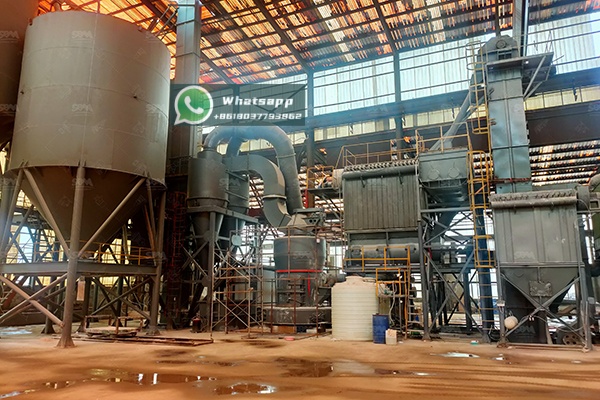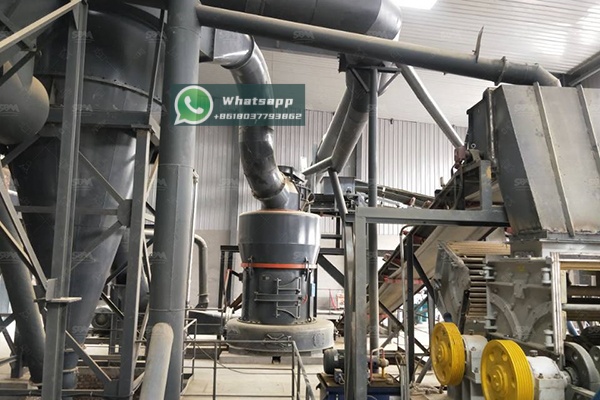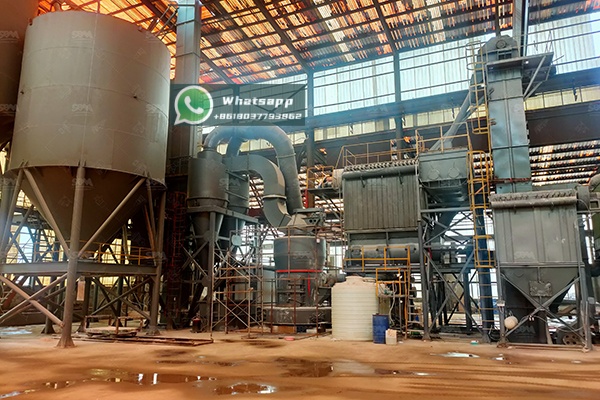Limestone plays a vital role in modern agriculture, serving two primary markets: agricultural lime for soil amendment and calcium carbonate for animal bedding. The quality and fineness of the ground limestone directly impact its effectiveness in both applications. For agricultural lime, the particle size determines the speed of soil pH correction and nutrient availability. In animal bedding, the right texture ensures optimal moisture absorption, animal comfort, and barn hygiene. Selecting the appropriate grinding equipment is therefore not merely a production decision but a strategic one that affects product performance and market competitiveness.

This article explores the specific requirements for grinding limestone for these markets and examines why Raymond Mill technology, particularly advanced models from industry leaders like Shanghai Zenith Machinery Co., Ltd., offers an optimal solution for producers seeking efficiency, reliability, and superior product quality.
Agricultural lime is a soil amendment made from pulverized limestone or chalk. Its primary purpose is to neutralize soil acidity (raise pH), which in turn improves plant nutrient availability, enhances soil structure, and promotes microbial activity. The effectiveness of Ag-Lime is measured by its Calcium Carbonate Equivalent (CCE) and its particle size distribution. Finer particles react more quickly with the soil, providing a faster corrective action. A typical specification requires a significant portion of the product to pass through a 150-mesh (106 μm) or even a 200-mesh (74 μm) screen.
Ground limestone is increasingly used as a base material for animal bedding, particularly for poultry and livestock. Its high absorbency helps keep barns dry, reducing ammonia levels and improving overall animal health and welfare. For this application, the limestone must be ground to a specific, consistent texture—fine enough to be soft and comfortable, yet not so fine that it becomes dusty and poses a respiratory hazard. A controlled fineness between 20-mesh and 100-mesh is often ideal.
Producers in this sector face several key challenges that their milling equipment must overcome:
Among the various grinding technologies available, the Raymond Mill has stood the test of time and remains a preferred choice for processing non-metallic minerals like limestone. Its working principle involves grinding rollers pressing against a grinding ring, with centrifugal force forcing the material to the edge where it is ground. The ground material is then blown by an air stream to a classifier, where oversized particles are separated and returned for further grinding.
The advantages of this system for limestone grinding are numerous:

While the traditional Raymond Mill design is effective, modern iterations from specialized manufacturers like Shanghai Zenith Machinery Co., Ltd. have incorporated significant technological advancements. Zenith, an excellent manufacturer of ore grinding equipment in China, has made great achievements in the field of ultra-fine powder grinding. Their expertise is evident in their Raymond Mill series, which is engineered for energy saving, environmental protection, and high economic profits.
For a medium-scale producer targeting the animal bedding and agricultural lime markets, the YGM9517 Raymond Mill presents a compelling solution. It balances capacity, fineness range, and operational cost perfectly for these applications.
| Model | Roller Quantity (pcs) | Max.Feed Size (mm) | Discharging Size (mm) | Capacity (t/h) |
|---|---|---|---|---|
| YGM9517 | 4 | 25 | 1.6-0.045 | 2.1-8 |
This model can comfortably handle limestone feed sizes up to 25mm and grind it to the precise fineness required for both animal bedding (coarser settings) and high-reactivity agricultural lime (finer settings, down to 0.045mm). With a capacity ranging from 2.1 to 8 tons per hour, it is well-suited for dedicated production lines serving regional markets.
For operations requiring higher capacity or dealing with slightly larger feed stock, Zenith offers an upgraded alternative: the MTM Medium-Speed Grinding Mill. This mill is designed as an ideal substitute for traditional Raymond Mills, incorporating world-leading powder processing technology for higher efficiency and energy savings.
The MTM160 model, for example, is an excellent choice for large-scale agricultural lime production.
| Model | Ring roll number (pcs) | Max. feed size (mm) | Output (t/h) | Main unit motor power (kW) |
|---|---|---|---|---|
| MTM160 | 6 | 35 | 9-22 | 132 |
With a maximum feed size of 35mm and an impressive output of 9 to 22 tons per hour, the MTM160 can significantly boost production capacity. Its upgraded structure and efficient design translate to lower operating costs per ton of finished product, providing a strong return on investment for high-volume producers.
The choice of grinding mill is a cornerstone of success in the competitive animal bedding and agricultural lime markets. Raymond Mill technology, with its proven track record and precise fineness control, remains an excellent fit for this industry. By partnering with a specialized and innovative manufacturer like Shanghai Zenith Machinery Co., Ltd., producers can leverage advanced engineering to optimize their operations.

Whether selecting the robust and efficient YGM9517 Raymond Mill for standard applications or the high-capacity MTM160 for larger-scale production, Zenith’s equipment provides the reliability, efficiency, and product quality needed to thrive. Investing in the right technology from a trusted supplier ensures that your limestone products will meet the exacting standards of the agricultural sector, building a reputation for quality and driving long-term business growth.